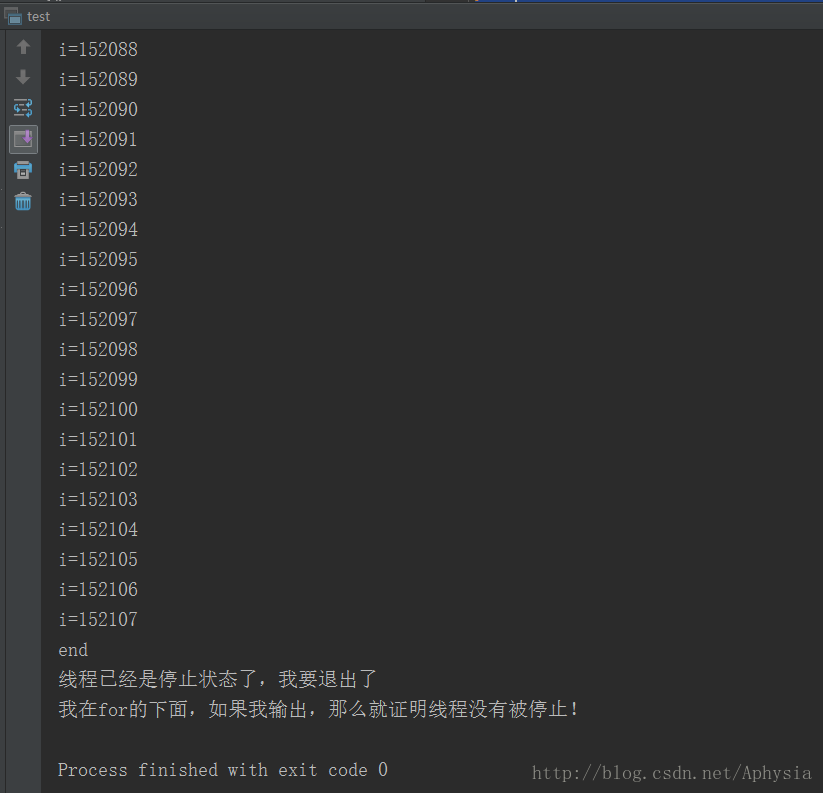大家都知道,java里面有3种方法来停止线程:
1.run()方法执行完毕,自动退出。
2.使用stop方法来强行退出,但是不推荐使用这个方法,因为此方法已过期。
3.使用interrupt方法中断线程。
注意,我们推荐使用interrupt()方法来停止线程,但是单纯调用interrupt()方法仅仅是在当前线程中打了一个停止的标记,并没有真的停止线程。
下面来看一个例子:
MyThread类:
public class MyThread extends Thread {
public void run(){
super.run();
for(int i=0;i<500000;i++)
{
if (this.interrupted()) {
System.out.println("线程已经是停止状态了,我要退出了");
break;
}
System.out.println("i="+(i+1));
}
System.out.println("我在for的下面,如果我输出,那么就证明线程没有被停止!");
}
}
test类:
public class test {
public static void main(String []args) {
try{
MyThread thread=new MyThread();
thread.start();
Thread.sleep(2000);
thread.interrupt();
}
catch (InterruptedException e)
{
System.out.println("main catch");
e.printStackTrace();
}
System.out.println("end");
}
}
输出为:
有上面可以得知,即使线程已经是停止状态(伪像),run()方法里面的句子还是会继续执行,为了解决这样的问题,我们使用了抛出异常的方法:
下面是一个例子:
MyThread类:
public class MyThread extends Thread {
public void run(){
super.run();
try{
for(int i=0;i<500000;i++)
{
if (this.interrupted()) {
System.out.println("线程已经是停止状态了,我要退出了");
throw new InterruptedException();
}
System.out.println("i="+(i+1));
}
System.out.println("我在for的下面,如果我输出,那么就证明线程没有被停止!");
}
catch (InterruptedException e){
System.out.println("进入MyThread.java类run方法中的catch了");
e.printStackTrace();
}
}
}
test类:
public class test {
public static void main(String []args) {
try{
MyThread thread=new MyThread();
thread.start();
Thread.sleep(2000);
thread.interrupt();
}
catch (InterruptedException e)
{
System.out.println("main catch");
e.printStackTrace();
}
System.out.println("end");
}
}
输出为:

达到了目的。
其实直接在run()方法里面通过return()来停止线程。但是代码中出现多个return之后会造成污染,所以不建议使用。
public class MyThread extends Thread{
public void run(){
while(true)
{
if(this.isInterrupted())
{
return ;
}
}
}
}

